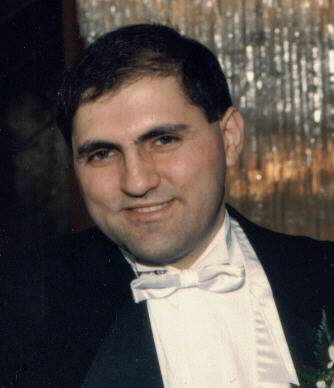| Innovative Vascular Health Group | ||
| CREDENTIALS
VARICOSE VEIN TREATMENT OPTIONS DIALYSIS ACCESS MANAGEMENT AND TREATMENT CAROTID ARTERY DISEASE TREATMENT PERIPHERAL VASCULAR DISEASE MANAGEMENT (PVD) ABDOMINAL AORTIC ANEURYSM TREATMENT MESENTERIC ARTERY DISEASE TREATMENT DEEP VEIN THROMBOSIS TREATMENT
|
.
Alfonso
Ciervo, MD, FACS Hazlet Office Eatontown Office 966 Hwy 36 142 Hwy 35, Suite 106 Hazlet NJ 07730 Eatontown NJ 07724
Office Phone: (732) 847-3461 Office
Fax:
(732) 284-4272
Diabetic Peripheral NeuropathyNeuropathy afffects 66% of patients with diabetes mellitus, of which the most common presentation is a diffuse, peripheral symmetrical polyneuropathy. Only 10-20% of patheients with diabetic neuropathy are affected by pain, paresthesia, or dysesthesia that requires antinociceptive theapy. Most of the destructive changes associated with diabetic neuropathy include neuropathic ulceration with osteomyelitis, Charcot's joint disease, peripheral autonomic neuropathy with vasomotor and sudomotor dysfunction and motor neuropathy with associated foot deformity.
Treatment for neuropathy is ongoing and can be classified into two main groups:
All patients should have strict control of the glucose using oral antihyperglycemic drugs and/or insulin. Glucose is metabolized by the polyol pathway, which includes aldose reductase, and enzyme tha converts in to a non-metabolizable surgar called sorbitol. Hyperglycemia the leads to an accumulation in the nerve of sorbitol. Nerve ischemia from microvascular disease is also present and leads to increase oxidative stress in the nerve, loss of neurotophic support, immune stimulation and altered protein synthesis. Sorbitol also depletes myoinositol from the membrane leading to nerve injury and abnormal conduction. The combination of metanx and pregabalin has reduced symptoms in ~70% of patients. As with any drug, always consult you doctor before taking any new medication. Pathophysiology Elevated homocysteine levels are found in patients with peripheral neuropathy. Homocysteine causes endothelial toxicity, endothelial thrombosis, and loss of vascular supply. Homocysteine interferes with the synthesis of nitric oxide, a gaseous free-radical need for normal nerve and vascular function. Nitric oxide is a smooth muscle relaxant tha tincreases neural blood flow by relaxation of the tunica media. Reduction in symptoms is in part due to the use of methylcobalamin, pyridoxine-5 phosphate and L-methylfolate in reduces the level of homocysteine. Histology Nerves form patients with neuropathy exhibit changes including reduced nerve fiber branch density, reduced peripheral nerve branch length, epidermal axon swelling, dermal plexus, sprouting of nerve terminal, encapsulation of nerve endings and the presence of mural reactive basal cells.
If you require any further information you may call our office at (732) 847-3461. How can you reach us? |
|
